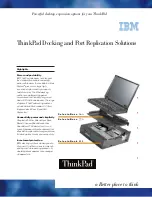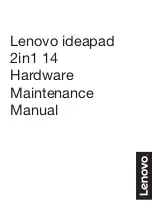
46
L i f e B o o k E S e r i e s – S e c t i o n T h r e e
IDLE MODE
Idle mode is one of the power management parameters.
When Idle mode is enabled, the CPU is put into low-
speed operation when there is no activity (keystroke,
pointer action, sound generation, video display change,
modem transmission or reception, etc.) on your note-
book for 16 seconds. Any activity will cause the normal
operation to restart automatically. This feature is inde-
pendent of the Suspend/Resume modes.
STANDBY MODE
Standby mode is one of the power management parame-
ters. When Standby mode is activated, your notebook
puts the CPU in low-speed operation, shuts off the
display and turns off the hard drive when there is no
activity (keystroke, pointer action, sound generation,
video display change, modem transmission or reception,
etc.) on your notebook for the user selected time-out
period. Any activity will cause your notebook to return
to normal operation automatically. This feature is inde-
pendent of the Power/Suspend/Resume button.
DISPLAY TIMEOUT
The Video Timeout is one of the power management
parameters. This feature saves power by turning off the
display if there is no keyboard or pointer activity for the
user selected timeout period. Any keyboard or pointer
activity will cause the display to restart automatically.
This feature is independent of the Power/Suspend/
Resume button and can be enabled and disabled in
Windows and BIOS setup utility. (See BIOS Setup Utility
on page 41 for more information)
HARD DISK TIMEOUT
The Hard Disk Timeout is another one of the power
management parameters. This feature saves power by
turning off the hard drive if there is no hard drive
activity for the user selected timeout period. Any
attempt to access the hard drive will cause it to restart
automatically. This feature is independent of the Power/
Suspend/Resume button and can be enabled and
disabled in Windows and BIOS setup utility. (See BIOS
Setup Utility on page 41 for more information)
WINDOWS 98 POWER MANAGEMENT
Power Management
The Power Management icon located in the Windows 98
Control Panel allows you to configure some of the power
management settings. For example, you can use the
Power Management to set the timeout values for turning
off the display and hard disks whether you are running
the notebook on battery power or one of the adapters.
(See Pre-Installed Software on page 34 for more informa-
tion) The settings may also be changed in the BIOS. (See
BIOS Setup Utility on page 41 for more information)
ACPI and Windows 98
Short for Advanced Configuration & Power Interface, a
power management specification developed by Intel,
Microsoft, and Toshiba. ACPI, which is part of the
Windows 98 operating system, enables the operating
system to control the amount of power given to each
device attached to the computer. With ACPI, the oper-
ating system can turn off peripheral devices, such as the
CD-ROM player, when it is not in use. Due to ongoing
industry development of ACPI technology, we have
configured your notebook to APM (Advanced Power
Management) mode.
P O I N T
Save-to-Disk mode requires allocating a significant
amount of hard drive capacity for saving all system
memory, which reduces your usable disk space. When
you purchase your notebook it will have space allocated
for the memory installed. If you upgrade the original
system by adding a memory upgrade module without
changing the size of your Save-to-Disk allocation you
will get an error message when you try to activate
Save-to-Disk mode and it will not work. Use the
PHDISK Utility to increase the size of the Save-to-Disk
file, SAVE2DSK.BIN. You can download the Save-to-
Disk File Allocation information from our Web site at
www.8fujitsu.com. I
f you need help, contact your
support representative for recommendations.
Summary of Contents for E Series
Page 1: ...S E R I E S E The Power And Choices You Demand User s Guide ...
Page 9: ...L i f e B o o k E S e r i e s ...
Page 11: ...2 L i f e B o o k E S e r i e s S e c t i o n O n e ...
Page 13: ...4 L i f e B o o k E S e r i e s S e c t i o n O n e ...
Page 45: ...36 L i f e B o o k E S e r i e s S e c t i o n T w o ...
Page 47: ...38 L i f e B o o k E S e r i e s S e c t i o n T h r e e ...
Page 57: ...48 L i f e B o o k E S e r i e s S e c t i o n T h r e e ...
Page 59: ...50 L i f e B o o k E S e r i e s S e c t i o n F o u r ...
Page 79: ...70 L i f e B o o k E S e r i e s S e c t i o n F o u r ...
Page 81: ...72 L i f e B o o k E S e r i e s S e c t i o n F i v e ...
Page 97: ...88 L i f e B o o k E S e r i e s S e c t i o n F i v e ...
Page 99: ...90 L i f e B o o k E S e r i e s S e c t i o n S i x ...
Page 103: ...94 L i f e B o o k E S e r i e s S e c t i o n S i x ...
Page 105: ...96 L i f e B o o k E S e r i e s S e c t i o n S e v e n ...
Page 109: ...100 L i f e B o o k E S e r i e s S e c t i o n S e v e n ...
Page 110: ...G l o s s a r y Section Eight Glossary ...
Page 111: ...L i f e B o o k E S e r i e s S e c t i o n E i g h t ...
Page 117: ...108 L i f e B o o k E S e r i e s S e c t i o n E i g h t ...
















































